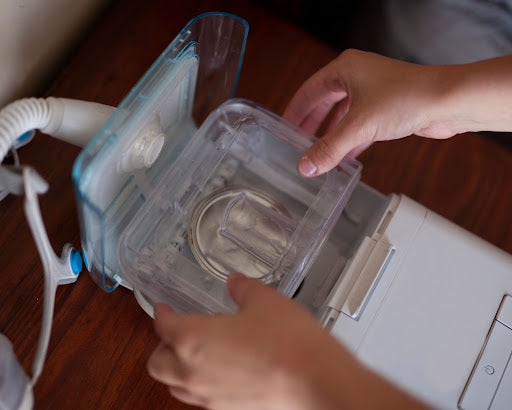As someone with sleep apnea, you know how it can wreak havoc on your daily life. Even when you get a full eight hours of sleep, you may find yourself feeling lethargic and unrested. To help combat the symptoms of sleep apnea, your doctor may recommend that you use a breathing machine while you sleep to provide pressurized airflow that helps to keep your airway open — reducing your breathing disruptions and allowing you to achieve a better night’s sleep.
By opting for positive airway pressure (PAP) therapy, you’ll receive the pressure you need through a mask worn throughout the night. But with so many PAP machines on the market, it can be confusing trying to figure out which breathing machine will provide you the relief you crave. Depending on your sleep apnea, your doctor will help you determine which type of breathing machine is the right choice for your sleep apnea: AutoPAP or CPAP.
If you want to learn more about these two types of PAP therapy, follow along as ApneaMed outlines how AutoPAP differs from a CPAP machine.
What Is AutoPAP?
PAP therapy aims to provide you with pressurized air that helps prevent the soft tissues in your throat from collapsing and blocking your airway. Your doctor may recommend one type of PAP therapy that uses an AutoPAP machine, otherwise known as an auto-adjustable positive airway pressure machine.
With this breathing machine, you’ll receive the pressurized air you need throughout the night at the pressure you specifically require. The AutoPAP machine can automatically adjust to your needs and provide varying air pressure levels while entering different sleep cycles throughout the night. With a range of pressure points to choose from, APAP therapy is exceptionally flexible and makes it easy for you to find your ideal setting.
What Is CPAP?
Another type of breathing machine, and the most popular, is a continuous positive airway pressure machine, otherwise referred to as CPAP. This is one of the most popular forms of treatment for sleep apnea and is often the first recommendation a sleep physician makes because a CPAP machine can deliver the necessary air to your lungs continuously throughout the night.
While an AutoPAP machine adjusts to your inhalation patterns, a CPAP machine provides steady, continuous pressure no matter the sleep cycle or sleeping position. Although the air pressure doesn’t automatically adjust on its own, it can be adjusted to match your specific needs. However, continuous positive airway pressure therapy can cause some discomfort in the beginning when a patient is getting used to the treatment due to the continuous pressure.
Is APAP or CPAP the Right Choice for Me?
Both CPAP and AutoPAP are great solutions for patients diagnosed with obstructive sleep apnea. While CPAP therapy is typically the first choice for most doctors, your sleep physician can walk you through which type of breathing machine is the right choice for your specific condition.
Each of these breathing machine options can relieve symptoms for patients, allowing you to receive a deeper night’s sleep and function better throughout the day. The goal is to ensure you reap the most benefits from the PAP therapy. If you aren’t sure which type of PAP therapy is ideal for your situation, your doctor can help determine if CPAP or AutoPAP aligns with your specific type of sleep apnea.
Once you’ve decided which form of sleep apnea therapy to move forward with, ApneaMed can supply the breathing machine you need. Contact us to learn more about the breathing equipment we provide sleep apnea patients.

